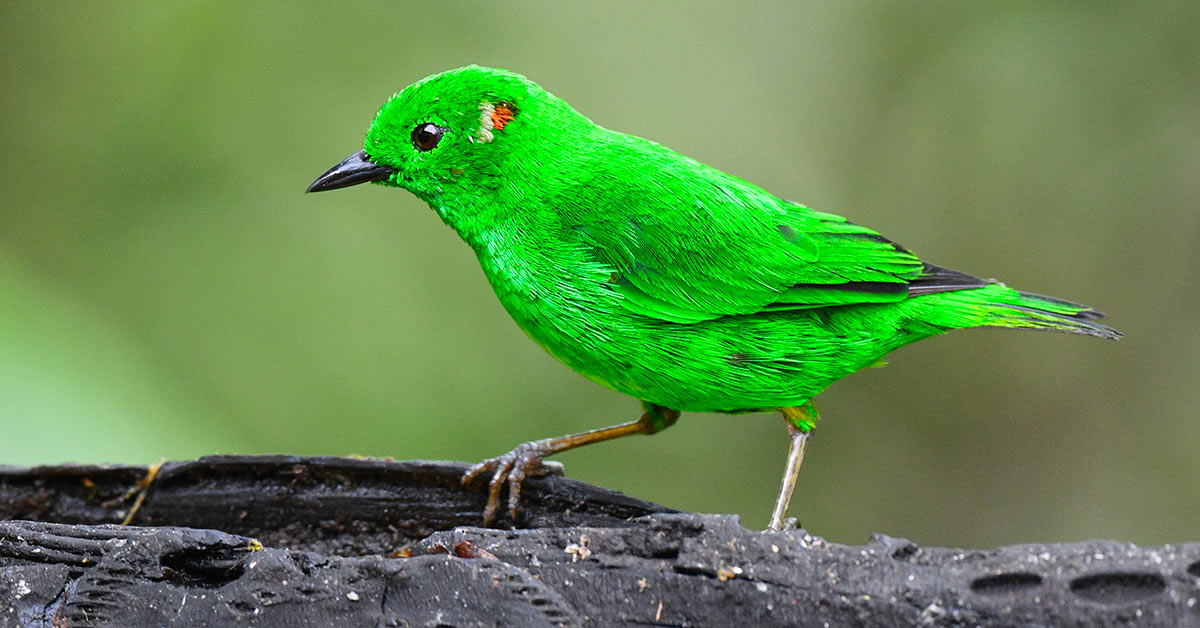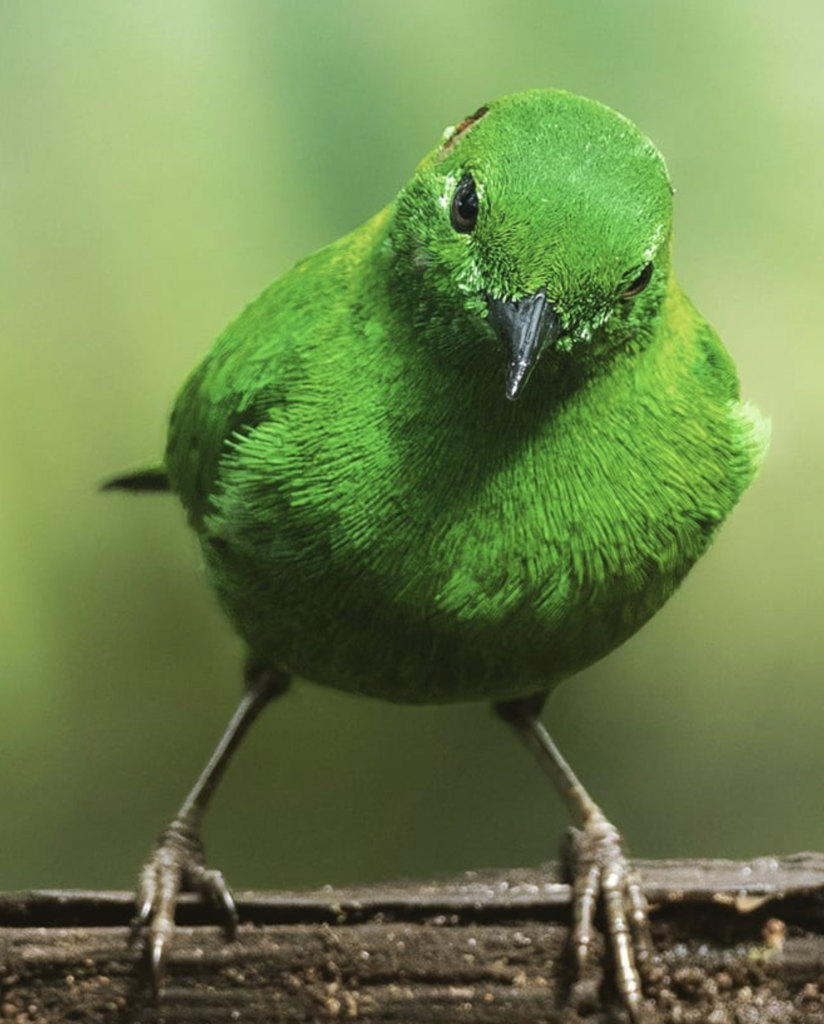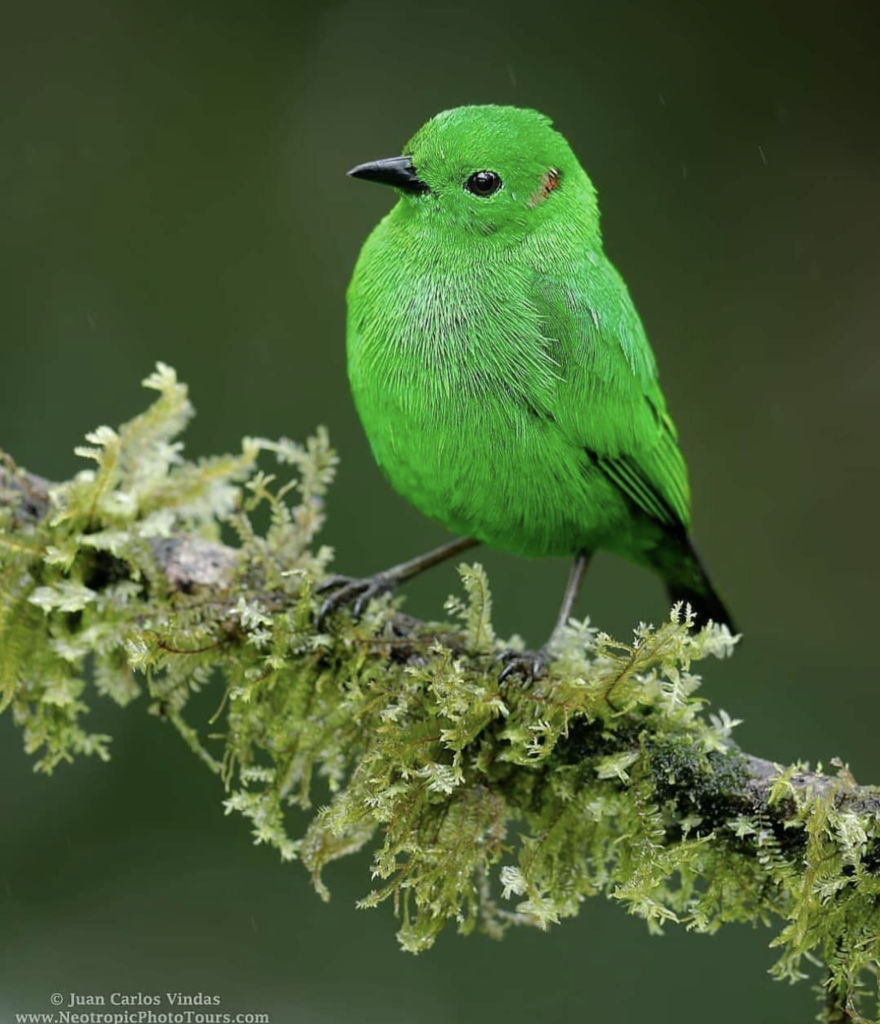Many birds have a neutral color scheme that allows them to blend in with their environment. There are pigeons, blackbirds, robins, and maybe the uncommon red cardinal with brown females. Then there’s the gleaming-green tanager, who throws concealment to the wind. This bird’s neon feathers are so dazzling that they appear to shine in the dark.
The Glistening-Green Tanager is a bright and adorable bird.

These photographs don’t have any filters applied to them to make the colors pop. The birds have a lot of green in them.

The green tanager may be found in Ecuador’s and Columbia’s moist, mossy woodlands. Tanager males and females are largely comparable in appearance, unlike the previously described brown and red cardinals. Females have a little duller appearance (despite still being very brilliant green), and they don’t always have the beautiful red and white patch on their heads. Babies also lack facial marks and are less brilliant. Males and females are both around 13 cm long and weigh about 20–24 grams.

Green tanagers feed on insects and fruit, hunting for food on the outside leaves. While they do occasionally congregate in familial groupings, they mainly live alone or in pairs.
They are members of the 240-species tanager family of birds. The majority of these birds are small to medium in size, fruit eaters, and vividly colored. Tanagers frequently construct globe-shaped nests on twigs with one entrance. The majority of the time, their residences are disguised by foliage.
The green tanager is one of nature’s most beautiful species, yet it is also one of the most underappreciated. Unfortunately, their bright feathers aren’t enough to protect them from the threats that birds face today.
Bird Populations on the Decline
According to data dating back to the 1970s, North America has lost approximately 3 billion birds spanning over 500 species in the last 50 years.
Ken Rosenberg, a conservation biologist at the Cornell Lab of Ornithology in Ithaca, New York, says, “We noticed this massive net loss throughout the whole avian group.” “According to our estimations, the overall number of breeding birds has decreased by 30%.”
This startling statistic, on the other hand, came as no surprise to them. However, there is some good news.
0 Comments